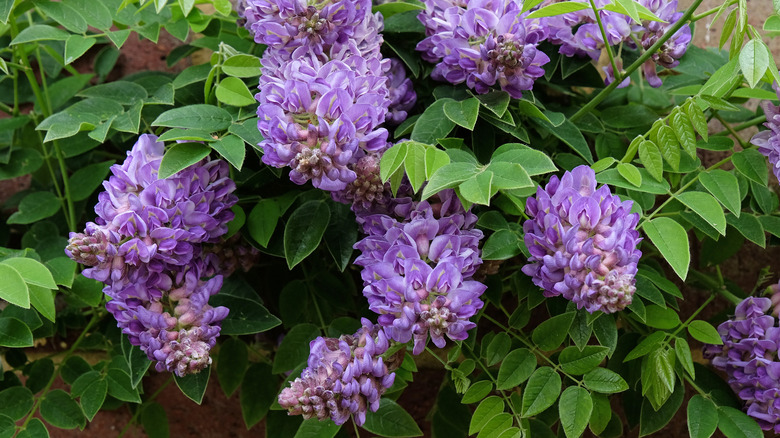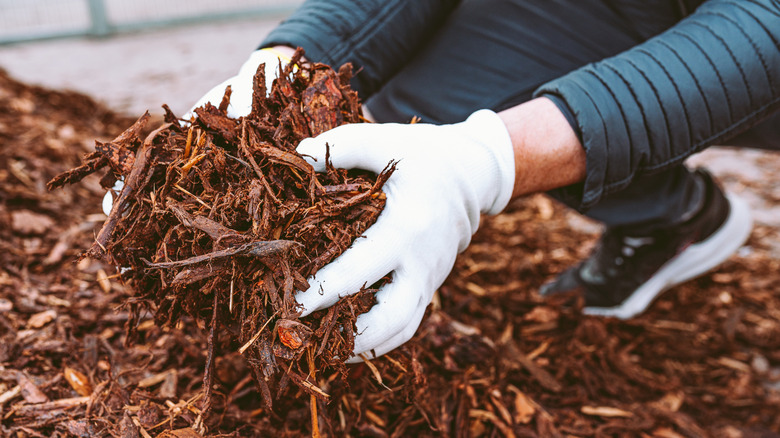Why You Should Avoid Fertilizing Wisteria Plants In The Fall, And What To Do Instead
If you have American wisteria (Wisteria frutescens) or Kentucky wisteria (Wisteria macrostachya), you probably want to do everything you can to help these beautiful native plants thrive and grow happily. These climbing plants make you feel like you are in a fairytale, with their stunning, drooping blooms and delicate foliage. Many plant lovers will reach for the fertilizer in the fall to give their shrubs and trees the nutrients they need to get through the colder months. However, fertilizing your wisteria in the fall can do more harm than good — disrupting dormancy and blooming.
Wisteria goes dormant in the winter, meaning that it will not be actively growing. As fertilizers promote new growth, the new growth they trigger would not have enough time to establish itself in the fall before going into dormancy. Furthermore, wisteria is a nitrogen-fixing plant, which means that it makes nitrogen for itself to use. Adding more nitrogen to your wisteria through fertilizing can produce more leafy growth, which will affect its flowers come spring. Although fertilizing your wisteria is not really necessary, as being slightly stressed out will actually lead it to bloom more profusely, you can instead give it a little feed in the spring. Use a low-nitrogen fertilizer once a year or every other year.
Caring for your wisteria plants in the fall
Although fertilizer is not necessary and can actually hinder the health of your plant, there are some fall tasks to ensure your native wisteria blooms beautifully in the spring that you can do. Wisterias prefer moist soil, and it is helpful to give the plant a good watering periodically throughout the summer and fall months. Adding mulch in the fall will also help the soil retain its moisture and provide a layer of insulation for your wisteria over the winter months. Use grass clippings, bark, chips, or compost and spread it around the base of your wisteria. Don't pile it up against the trunk. Instead, create a flat, donut-shaped area around the plant. If you have a potted wisteria, you may wish to look into extra layers of insulation, such as thermal blankets, since potted plants are more susceptible to cold weather than those in the ground.
You can do some light pruning and training on your wisteria plant during the fall to keep it looking healthy and attractive. However, any hard pruning should be left until the spring. Simply tidying up broken or dead stems and tying up anything that may get damaged from intense weather is enough to keep your wisteria happy over the winter months. As the seedpods of wisterias can cause new plants to grow in your yard, you may also wish to take them off in the fall to control the spread.

